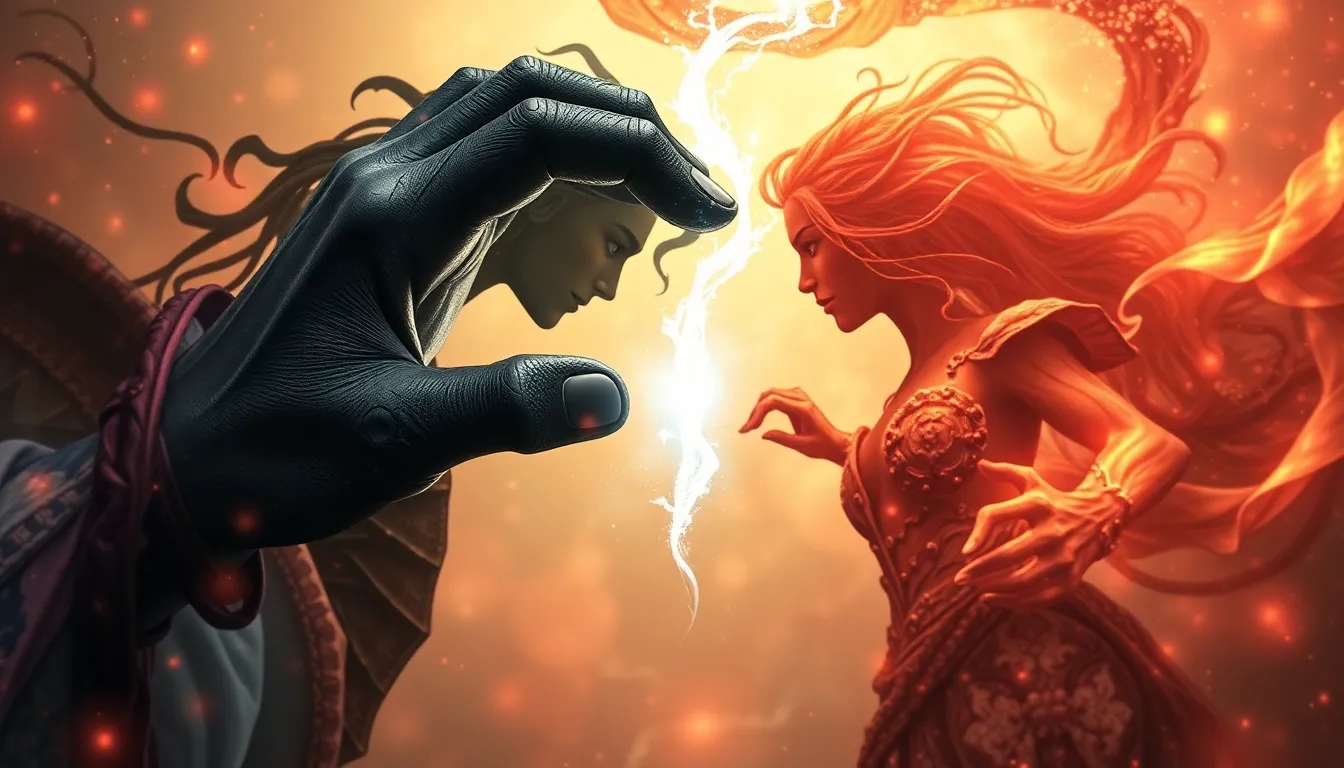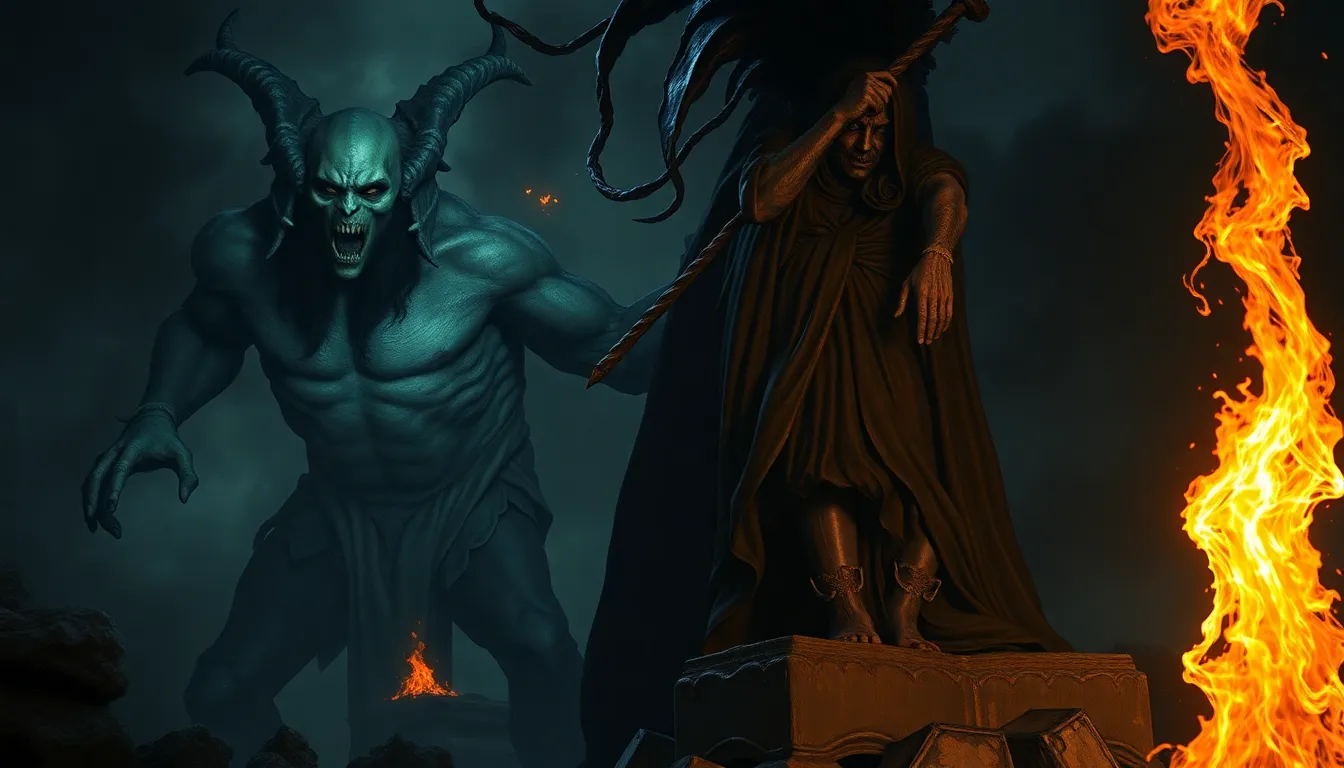Fate’s Hand: The Role of Destiny in Mythical Love Stories
Introduction: The Intersection of Fate and Love in Mythology
Fate and destiny are concepts that have fascinated humanity for centuries, intertwining themselves into the very fabric of our storytelling. Fate is often viewed as a predetermined course of events, while destiny involves the notion of a purpose or a final outcome that one is meant to fulfill. In mythology, love stories frequently embody these themes, illustrating how forces beyond human control can shape romantic relationships.
This article explores how various mythologies represent the intricate dance between fate and love, revealing the complexities of human emotions as they navigate the paths laid out by destiny.
Understanding Destiny: Ancient Beliefs and Interpretations
Ancient cultures held diverse beliefs about destiny, often attributing it to the will of gods and supernatural forces. For instance:
- Greek Mythology: The Moirai, or Fates, were three sisters who spun, measured, and cut the thread of life, determining the destinies of both mortals and gods.
- Norse Mythology: The Norns, similar to the Moirai, were responsible for weaving the fate of individuals, and even the gods, into their tapestry of life.
- Hindu Mythology: The concept of karma plays a significant role, where one’s actions in past lives dictate their current fate.
These ancient views emphasize the role of deities or supernatural forces in shaping human destinies, reinforcing the belief that love, too, is subject to their whims.
The Hero’s Journey: Love Stories as a Quest for Destiny
The narrative structure known as the Hero’s Journey, popularized by Joseph Campbell, provides a framework for understanding love stories as quests for destiny. This journey typically includes stages like the call to adventure, facing trials, and achieving a transformative goal. Many protagonists in love stories experience fate as they embark on their romantic quests.
Examples of protagonists who navigate fate in their love journeys include:
- Orpheus: His descent into the underworld to reclaim his beloved Eurydice exemplifies a quest driven by love and destiny.
- Tristan and Isolde: Their love, intertwined with fate and tragedy, showcases the challenges of pursuing a forbidden relationship.
Fate as an Inescapable Force: Case Studies in Mythical Love
In many mythical love stories, fate emerges as an inescapable force that dictates the course of events. Consider the tale of Orpheus and Eurydice, where Orpheus’s attempt to rescue Eurydice from the underworld ultimately leads to her permanent loss due to a fatal mistake. Similarly, the story of Pyramus and Thisbe illustrates how misunderstandings fueled by fate can lead to tragic outcomes.
The implications of inevitable fate in these narratives often serve to highlight the fragility of love and the power of destiny, leaving readers to ponder the extent to which our choices are preordained.
Contrasting Free Will and Fate: The Duality of Choice in Love
One of the most compelling aspects of mythical narratives is the tension between free will and predetermined fate. Characters often grapple with their choices in the face of destiny, leading to profound moral and philosophical questions. For instance:
- Romeo and Juliet: Their love is depicted as both a choice and a consequence of fate, as their families’ feud sets the stage for tragedy.
- Hades and Persephone: Their love story navigates the complexities of choice, as Persephone’s abduction reflects the interplay of free will and destiny.
These stories encourage reflection on the nature of choice and the extent to which individuals can shape their own destinies.
Symbolism and Imagery: Fate in Mythical Love Stories
Symbols associated with fate often enhance the emotional depth of love stories. Common motifs include:
- Threads of Fate: Representing the interconnectedness of lives and the inescapable nature of destiny.
- Stars: Often seen as indicators of fate, guiding lovers on their paths.
- Omens: Signs that foreshadow events, reinforcing the idea that fate is at play.
These symbols not only enrich the narratives but also resonate with readers, inviting them to explore their own beliefs about fate and love.
Cultural Variations: Fate in Different Mythological Frameworks
Fate is depicted differently across various mythological frameworks. Eastern and Western mythologies offer unique perspectives:
- Eastern Mythologies: Often emphasize cyclical views of fate, where past actions influence current realities, as seen in Hindu and Buddhist beliefs.
- Western Mythologies: Frequently present fate as a linear journey, where choices lead to predetermined outcomes, as illustrated in Greek and Roman myths.
These cultural variations highlight how narratives evolve within their contexts, reflecting societal values and beliefs about love and destiny.
Modern Interpretations: The Legacy of Mythical Love and Fate
The influence of mythical love stories continues to resonate in modern literature and media. Contemporary adaptations often explore themes of fate and destiny, breathing new life into ancient narratives. Examples include:
- The Fault in Our Stars by John Green: A modern love story that grapples with fate and the randomness of life and death.
- The Time Traveler’s Wife by Audrey Niffenegger: A narrative that intertwines love and fate across time, challenging characters to navigate their destinies.
These modern interpretations reflect ongoing fascination with the interplay of love and fate, illustrating how timeless themes continue to shape our understanding of relationships.
Lessons from Mythical Love Stories: Fate and Relationships Today
Mythical love stories impart valuable lessons about fate and relationships. They encourage us to consider the following:
- The complexity of love, which often involves navigating challenges beyond our control.
- The importance of choice, even when faced with seemingly predetermined paths.
- Reflection on how our relationships may be influenced by factors we cannot change, prompting us to embrace the unpredictable nature of love.
Conclusion: Embracing the Dance of Fate and Love
In summary, the exploration of fate in mythical love stories reveals a rich tapestry of human experience, where love is both a choice and a journey shaped by destiny. By examining these narratives, we gain insight into our own beliefs about fate and its role in our relationships.
As we navigate the complexities of love in our lives, let us embrace the dance of fate and cherish the connections that define our existence.


